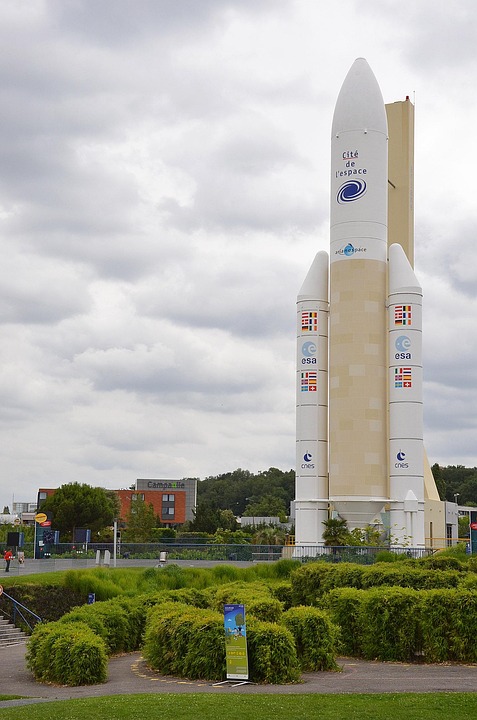Decentralized Gaming Metaverse Platforms: Redefining the Future of Play
The concept of the metaverse has captivated imaginations for decades, but it is only in recent years that technology has advanced enough to make it a tangible reality. Today, the metaverse is evolving beyond a mere digital playground into a dynamic, interactive ecosystem where users can create, own, and trade virtual assets. At the forefront of this transformation are decentralized gaming metaverse platforms, which leverage blockchain technology to empower players with true ownership of their digital experiences. These platforms are not just changing how we game—they are redefining the entire relationship between users, developers, and virtual economies.
What Are Decentralized Gaming Metaverse Platforms?
A decentralized gaming metaverse refers to a virtual space built on blockchain technology that operates without a central authority. Unlike traditional gaming platforms, where game developers and publishers control assets, rules, and data, decentralized metaverses use distributed ledgers to ensure transparency, security, and user sovereignty. Key components of these platforms include:
- Blockchain Infrastructure: Underlying blockchains (e.g., Ethereum, Polygon, or Binance Smart Chain) enable secure, tamper-proof record-keeping of transactions and digital assets.
- Non-Fungible Tokens (NFTs): These unique digital certificates represent in-game items, virtual land, or characters, granting users verifiable ownership.
- Cryptocurrencies: Native tokens facilitate transactions within the metaverse, allowing players to buy, sell, or trade assets seamlessly.
- Smart Contracts: Self-executing agreements automate rules, ensuring fairness and reducing reliance on intermediaries.
- Decentralized Autonomous Organizations (DAOs): Community-driven governance models let users vote on platform updates, policy changes, and development priorities.
By combining these elements, decentralized gaming metaverses create open, user-centric environments where players are not just consumers but active participants in the economy and evolution of the space.
How Decentralized Gaming Metaverse Platforms Work
At their core, these platforms are powered by blockchain’s decentralized nature, which eliminates single points of failure and censorship. For instance, when a player purchases a virtual property in a decentralized metaverse, that transaction is recorded on the blockchain, making it immutable and verifiable. Similarly, in-game items—like weapons, skins, or characters—are tokenized as NFTs, allowing them to be traded on open markets.
Smart contracts play a pivotal role by governing the rules of the game, ensuring that transactions and interactions occur as programmed. This removes the need for central servers, reducing the risk of fraud or manipulation. Additionally, DAOs enable communities to collectively manage and shape the metaverse, fostering a sense of ownership and collaboration.
Interoperability is another hallmark. Unlike traditional games, where assets are confined to a single platform, decentralized metaverses often allow users to transfer NFTs and tokens across different ecosystems. For example, a virtual hat purchased in The Sandbox could be used in Decentraland, creating a more connected digital world.
Benefits of Decentralized Gaming Metaverses
-
True Ownership of Assets:
Players own their in-game items and virtual land as NFTs, which they can sell, trade, or use across platforms. This contrasts with traditional games, where assets are tied to the developer’s servers and can be revoked or altered at will. -
Transparency and Security:
Blockchain’s immutability ensures that all transactions are transparent and secure. Players can audit the economy, and the risk of scams or counterfeit items is minimized. -
Community-Driven Governance:
DAOs let users influence the direction of the metaverse through voting, fostering a collaborative environment where the community shapes the future. -
Play-to-Earn Models:
Many decentralized platforms reward players with cryptocurrency for their time and skill. Games like Axie Infinity have enabled players to earn real-world income, democratizing access to gaming economies. - Cross-Platform Interoperability:
Assets and data can often move between different platforms, creating a more fluid and expansive virtual experience.
Notable Examples of Decentralized Gaming Metaverses
- Axie Infinity: A blockchain-based game where players collect, breed, and battle creatures called Axies. Built on the Ronin blockchain (a sidechain of Ethereum), it popularized the "play-to-earn" model, allowing players to generate income through gameplay and trading.
- Decentraland: A virtual world on Ethereum where users buy and sell plots of land as NFTs. It hosts events, art galleries, and interactive experiences, all governed by a DAO.
- The Sandbox: Combines user-generated content with blockchain, letting players create and monetize games and virtual assets. It uses Ethereum and has partnerships with major brands like Gucci and Nike.
- Somnium Space: A metaverse focused on virtual reality, enabling users to build and explore immersive environments. It emphasizes interoperability with other VR platforms.
- Enjin and WAX: These platforms provide tools for developers to create NFT-based games, often prioritizing ease of use and scalability.
These examples illustrate the diversity and innovation within the space, from casual games to high-end virtual economies.
Challenges and Considerations
Despite their potential, decentralized gaming metaverses face hurdles:
- Scalability: High demand can strain blockchains, leading to slow transactions and high fees. Solutions like layer-2 technologies or alternative blockchains (e.g., Solana, Polygon) are being explored.
- Energy Consumption: Proof-of-Work blockchains like Ethereum have faced criticism for their environmental impact. Many platforms are transitioning to energy-efficient consensus mechanisms, such as Proof-of-Stake.
- User Experience: The complexity of blockchain interactions (wallets, gas fees, smart contracts) can deter mainstream adoption. Simplifying these processes is critical for growth.
- Regulatory Uncertainty: Governments are still grappling with how to classify NFTs, cryptocurrencies, and virtual economies, creating a murky legal landscape.
The Future of Decentralized Gaming Metaverses
The future looks promising as advancements in blockchain scalability (e.g., Ethereum 2.0, Arbitrum) and interoperability protocols (e.g., Polkadot, Cosmos) address current limitations. Integration with AR/VR technologies will further enhance immersion, blurring the lines between the physical and digital worlds.
Moreover, the rise of Web3—a decentralized internet—positions these platforms as key pillars of the next-generation internet. As more developers and players adopt these ecosystems, we may see the emergence of new business models, such as community-owned studios or decentralized game distribution.
Conclusion
Decentralized gaming metaverse platforms are not just a trend but a paradigm shift. They challenge the traditional notion of gaming by prioritizing user autonomy, transparency, and shared ownership. While challenges remain, the potential for innovation is vast, promising a future where players are not just participants but stakeholders in the digital worlds they inhabit. As technology evolves and adoption grows, these platforms could redefine the gaming industry, making it more inclusive, dynamic, and economically empowering for all.
The metaverse is no longer a distant dream—it is a decentralized, user-driven frontier where the rules are set by the community, and the possibilities are limitless.






